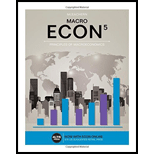2. (Maximum length one page.) Consider a strange infectious disease that infects cows and people. Cows live in a fenced pasture and spend their days wandering around aimlessly munching on grass; College students live like normal college students: some are more social than others, some study in isolation and others study in groups, etc.... Suppose that we examine the number of interactions of the cows and the students and find that the average number of interactions across which this infectious disease can spread is the same. a) Explain how epidemiologists use the concept of the reproduction number, R, and how R will differ across these two populations. In your response, be sure to state a definition for R; how Kucharski's DOTS framework can be used to understand R; and how it is used to understand infectious disease dynamics. b) How does the epidemiological concept of dispersion relate to R? How does it relate to superspreading and Pareto's "80-20 rule?" c) Based on the information about the cow population given above and our discussion of the social networks of people from class, will the cows and students have the same values for dispersion? How do you expect that they will differ? Why? d) Considering only the interaction effects within this question, which population is more at risk of a very large outbreak of this disease? Why?
2. (Maximum length one page.) Consider a strange infectious disease that infects cows and people. Cows live in a fenced pasture and spend their days wandering around aimlessly munching on grass; College students live like normal college students: some are more social than others, some study in isolation and others study in groups, etc.... Suppose that we examine the number of interactions of the cows and the students and find that the average number of interactions across which this infectious disease can spread is the same. a) Explain how epidemiologists use the concept of the reproduction number, R, and how R will differ across these two populations. In your response, be sure to state a definition for R; how Kucharski's DOTS framework can be used to understand R; and how it is used to understand infectious disease dynamics. b) How does the epidemiological concept of dispersion relate to R? How does it relate to superspreading and Pareto's "80-20 rule?" c) Based on the information about the cow population given above and our discussion of the social networks of people from class, will the cows and students have the same values for dispersion? How do you expect that they will differ? Why? d) Considering only the interaction effects within this question, which population is more at risk of a very large outbreak of this disease? Why?
Principles of Economics 2e
2nd Edition
ISBN:9781947172364
Author:Steven A. Greenlaw; David Shapiro
Publisher:Steven A. Greenlaw; David Shapiro
Chapter13: Positive Externalities And Public Goods
Section: Chapter Questions
Problem 25P: Becky and Sarah are sisters 1who share a room. Their room can easily get messy, and their parents am...
Related questions
Question

Transcribed Image Text:2. (Maximum length one page.) Consider a strange infectious disease that infects cows and people.
Cows live in a fenced pasture and spend their days wandering around aimlessly munching on grass;
College students live like normal college students: some are more social than others, some study in
isolation and others study in groups, etc.... Suppose that we examine the number of interactions of the
cows and the students and find that the average number of interactions across which this infectious
disease can spread is the same.
a) Explain how epidemiologists use the concept of the reproduction number, R, and how R will
differ across these two populations. In your response, be sure to state a definition for R; how
Kucharski's DOTS framework can be used to understand R; and how it is used to understand
infectious disease dynamics.
b) How does the epidemiological concept of dispersion relate to R? How does it relate to
superspreading and Pareto's "80-20 rule?"
c) Based on the information about the cow population given above and our discussion of the social
networks of people from class, will the cows and students have the same values for dispersion?
How do you expect that they will differ? Why?
d) Considering only the interaction effects within this question, which population is more at risk of a
very large outbreak of this disease? Why?
Expert Solution
This question has been solved!
Explore an expertly crafted, step-by-step solution for a thorough understanding of key concepts.
Step by step
Solved in 2 steps

Recommended textbooks for you

Principles of Economics 2e
Economics
ISBN:
9781947172364
Author:
Steven A. Greenlaw; David Shapiro
Publisher:
OpenStax

Essentials of Economics (MindTap Course List)
Economics
ISBN:
9781337091992
Author:
N. Gregory Mankiw
Publisher:
Cengage Learning

Brief Principles of Macroeconomics (MindTap Cours…
Economics
ISBN:
9781337091985
Author:
N. Gregory Mankiw
Publisher:
Cengage Learning

Principles of Economics 2e
Economics
ISBN:
9781947172364
Author:
Steven A. Greenlaw; David Shapiro
Publisher:
OpenStax

Essentials of Economics (MindTap Course List)
Economics
ISBN:
9781337091992
Author:
N. Gregory Mankiw
Publisher:
Cengage Learning

Brief Principles of Macroeconomics (MindTap Cours…
Economics
ISBN:
9781337091985
Author:
N. Gregory Mankiw
Publisher:
Cengage Learning



Economics Today and Tomorrow, Student Edition
Economics
ISBN:
9780078747663
Author:
McGraw-Hill
Publisher:
Glencoe/McGraw-Hill School Pub Co